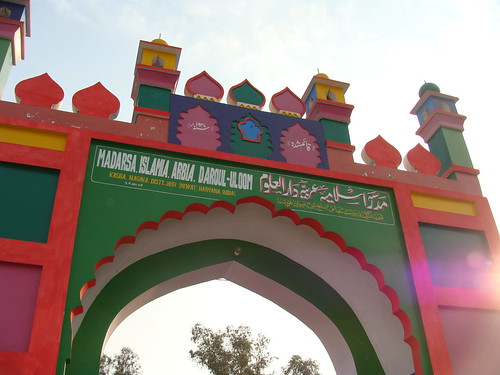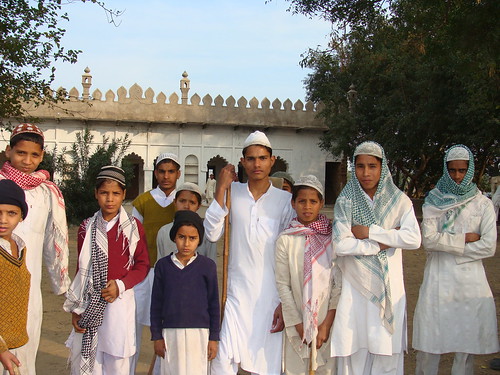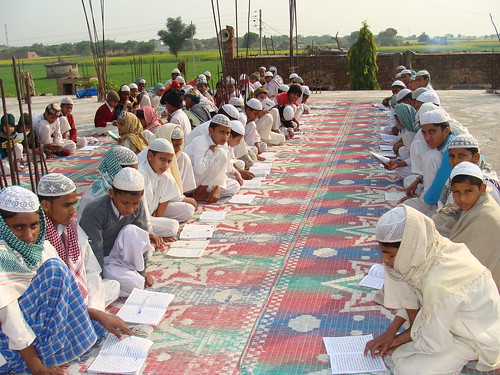By Abu Zafar for TwoCircles.net,
New Delhi: Mewat – the most backward district in the country – is more modern than others when it comes to madrasa education system. About 85% of the existing madrasas in the Haryana district teach both religious and modern subjects and so its graduates get both traditional jobs (at mosques and madrasas) and market jobs easily. About 90% of the local Muslim population — which dominates (roughly 80%) the district – would like to prefer madrasas to general schools, says a study conducted by Indian Council of Social Science Research (ICSSR), a government of India institution.
The study says that the madrasa education system here is more practical for providing free education than the government system. The study also says that the madrasa education is more job-orientated than modern education in this district.

According to the study, Mewat has 77 madrasas, including 18 common madrasa for boys and girls and 5 separate for only girls. Out of 77 madrasas, 65 have modern courses while 8 have additional vocational training courses, besides religious subjects.
“In primary level every madrasa provides teaching of basic Hindi, English, Science and elementary Mathematics apart from Urdu and Quran.” study says.
“The madrasa education system is more practical than the government as it gives free education to every child”, says Mohammad Ishtiaq, who did the study titled ‘Role of Madarsas in Promoting Education and Development in Mewat district’.
“The madrasa education system is running here since sultanate period and it is older than the Indian government”, Ishtiaq, who is professor of Geography at Jamia Millia Islamia, New Delhi and has Advanced Diploma in Cartography from Survey Training Institute, Hyderabad, told TCN.
Tablighi Jamaat, an international Islamic organization, was established in Mewat in 1926, which has deep root in madrasas.
In 1947 there were only 14 madrasas here in Mewat but of late there has been rise in the number of madrasas due to the growing demand.
According to the study, about 89 percent people of the district favour modern education with religious education in madrasas as due to poor economic condition they can’t send their children to the English medium schools. But the poverty is so grim that they can’t even send their children to madrasas.

According to 2001 Census, the total population of Mewat was 9,93,617, of which 80% are said to be Muslims. According to the study, there are 77 madrasas where about 10,000 students are learning. About 55% Muslims in Mewat earn less than 5,000 in a month, says the study.
Madrasa Islamia Arabia Dargah Hazrat Sheikh Moosa in Palla village was established in 1332. Having 150 students the madrasa provides education till 5th standard.
Mohammed Asalm, who studied Almiyat, a bachelor degree level course, in Madrasa Moinul Islam at Nuh, a town in Mewat, says that he never faced difficulty in finding a job. “As I completed my course in madrasa I didn’t face any difficulty and I am happy with my job”
Prof Ishtiaq also refutes the charge that madrasas are nursery of terrorism. The charge was terrible but it inspired him to do a specific study on madrasas.
“I also studied in madrasa in my childhood. If someone does anything wrong you can’t blame madrasas for it,” he further said.
“Local people of Mewat are energetic and have a challenging nature. They would not hesitate to grab the opportunity if provided in proper prospective with a view to enhance their economic condition through employment without disturbing their religious identity.” study concluded.

About Mewat
Mewat district was carved out from Gurgaon and Faridabad districts of Haryana. It became 20th district of Haryana on 4th April 2005. Mewat comprises of three sub-divisions — Nuh, Firozpur Jhirka and Hathin. The district headquarter is located at Nuh. The district comprises of six blocks namely Nuh, Tauru, Nagina, Firozpur Zhirka, Punhana and Hathin. There are 532 villages in the district.
Geographically, Mewat district is situated between 26-degree and 30-degree North latitude and 76-degree and 78-degree East longitude. Gurgaon district bounds it on its North, while Rewari district lies to its West and Faridabad district to its East. On South, the district shares its boundary with Rajasthan. Mewat has hills and hillock of the Aravali Mountain on one hand and plains on the other.
The main occupation of the people of Mewat, land of the Meos or Muslims, is agriculture. The Meos are the predominant population group.
(Abu Zafar is a Delhi based Journalist and can be contacted at [email protected])
[Photos by Mumtaz Alam Falahi of TwoCircles.net]

